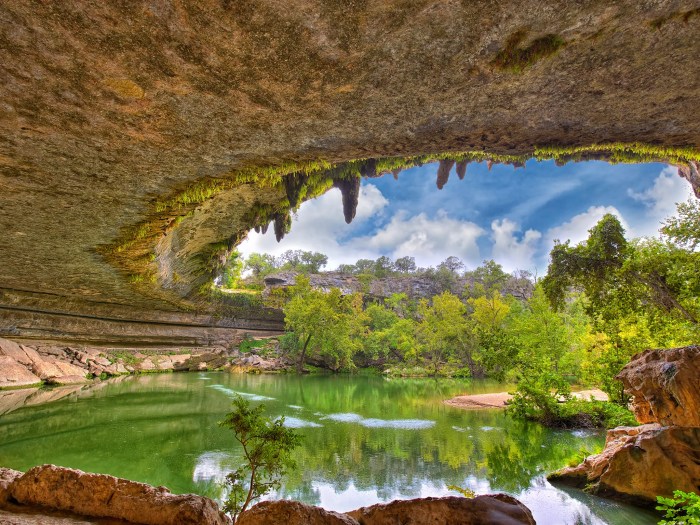Nature vacation spots beckon travelers to immerse themselves in the wonders of the natural world. From breathtaking landscapes to diverse wildlife, these destinations offer an escape from the hustle and bustle of everyday life and a chance to reconnect with the beauty and tranquility of the great outdoors.
Join us on an extraordinary journey as we unveil a curated list of nature vacation spots that will ignite your wanderlust. Whether you seek adventure, relaxation, or a profound connection with nature, this guide will inspire you to plan your next unforgettable getaway.
Popular Nature Vacation Destinations Worldwide
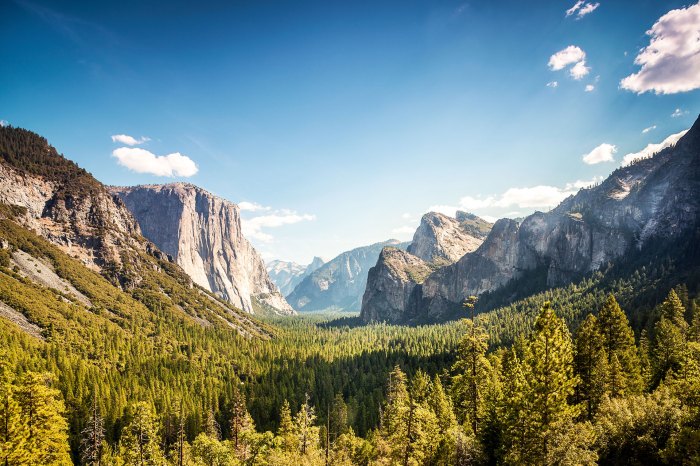
Immerse yourself in the wonders of nature with these top-rated vacation spots that offer breathtaking landscapes, abundant wildlife, and unforgettable experiences.
Africa
| Destination | Location | Key Features | Activities |
|---|---|---|---|
| Serengeti National Park | Tanzania | Vast savannah with iconic wildlife sightings, including the Great Migration | Game drives, hot air balloon safaris, wildlife photography |
| Victoria Falls | Zambia/Zimbabwe | Largest waterfall in the world, known as “the Smoke that Thunders” | White-water rafting, bungee jumping, sunset cruises |
| Kruger National Park | South Africa | Premier wildlife sanctuary with the Big Five and diverse ecosystems | Guided game drives, bush walks, stargazing |
Asia
| Destination | Location | Key Features | Activities |
|---|---|---|---|
| Great Barrier Reef | Australia | World’s largest coral reef system with vibrant marine life | Snorkeling, scuba diving, glass-bottom boat tours |
| Mount Everest | Nepal/China | Highest mountain in the world, a symbol of adventure and exploration | Trekking, mountaineering, scenic flights |
| Komodo National Park | Indonesia | Home to the endangered Komodo dragon, the largest lizard on Earth | Wildlife tours, snorkeling, island hopping |
North America
| Destination | Location | Key Features | Activities |
|---|---|---|---|
| Yellowstone National Park | United States | Iconic national park with geothermal wonders, wildlife, and stunning scenery | Wildlife viewing, hiking, geothermal exploration |
| Yosemite National Park | United States | Dramatic granite cliffs, waterfalls, and ancient giant sequoia trees | Hiking, rock climbing, photography |
| Grand Canyon National Park | United States | Vast canyon carved by the Colorado River, offering breathtaking views | Hiking, mule tours, white-water rafting |
South America
| Destination | Location | Key Features | Activities |
|---|---|---|---|
| Amazon Rainforest | Brazil/Peru/Colombia | Largest rainforest in the world, home to an astonishing array of biodiversity | Wildlife tours, river cruises, jungle treks |
| Iguazu Falls | Argentina/Brazil | One of the world’s largest waterfall systems, with stunning cascades and rainbows | Hiking, boat tours, wildlife viewing |
| Patagonia | Chile/Argentina | Rugged region with towering mountains, glaciers, and fjords | Hiking, kayaking, wildlife photography |
Best Time to Visit
The best time to visit these destinations depends on factors such as weather, wildlife activity, and crowd levels. Generally, spring and fall offer optimal conditions for wildlife viewing and outdoor activities.
Additional Resources
- National Geographic: World’s Best Nature Travel Destinations
- Lonely Planet: Best Nature Destinations
- World Wildlife Fund: Wild Places
Hidden Gems for Nature Lovers
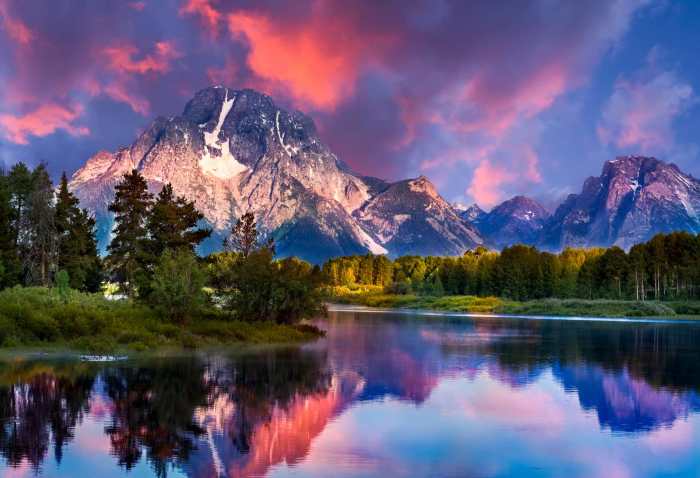
Beyond the popular destinations, there are hidden gems waiting to be discovered by nature enthusiasts. These lesser-known spots offer unique and immersive experiences, showcasing pristine landscapes, abundant wildlife, and rich local cultures.
From secluded rainforests to rugged coastlines, these hidden gems provide opportunities for wildlife encounters, scenic hikes, and cultural immersion. Whether you’re seeking tranquility or adventure, these destinations will leave you with lasting memories.
Secluded Rainforest Retreats
| Destination | Location | Seasonality | Activities |
|---|---|---|---|
| Tambopata National Reserve | Peruvian Amazon | Year-round | Wildlife viewing, canopy walks, river cruises |
| Kinabalu National Park | Malaysia | April-September | Mountaineering, wildlife photography, cultural immersion |
| Daintree Rainforest | Australia | Year-round | Guided walks, wildlife spotting, Aboriginal cultural experiences |
Rugged Coastal Wonders
| Destination | Location | Seasonality | Activities |
|---|---|---|---|
| Cape Breton Highlands National Park | Canada | June-October | Coastal hiking, whale watching, kayaking |
| Los Glaciares National Park | Argentina | October-March | Glacier trekking, wildlife viewing, scenic drives |
| Khao Sok National Park | Thailand | November-April | Jungle trekking, lake cruises, wildlife encounters |
National Parks and Wildlife Sanctuaries
National parks and wildlife sanctuaries play a pivotal role in preserving the Earth’s precious natural habitats. These protected areas safeguard diverse ecosystems, endangered species, and the ecological balance that sustains our planet.
Renowned national parks like Yellowstone in the United States and Serengeti in Tanzania are globally recognized for their breathtaking landscapes, abundant wildlife, and ongoing conservation efforts. These parks implement strict regulations to protect wildlife, restore habitats, and conduct scientific research to ensure the well-being of their ecosystems.
Wildlife Sanctuaries
Wildlife sanctuaries, such as the Great Barrier Reef Marine Park in Australia and the Galapagos Islands in Ecuador, focus specifically on protecting endangered or threatened species and their habitats. These sanctuaries provide a safe haven for animals like sea turtles, whales, and giant tortoises, allowing them to thrive and reproduce in a protected environment.
Eco-Friendly Travel Practices
Embracing sustainable tourism and eco-friendly travel practices is crucial to protect the pristine environments we visit. The impact of tourism on the environment can be significant, but as travelers, we have the power to minimize our footprint and preserve these natural wonders for generations to come.
Here are some tips and recommendations for eco-friendly travel:
Accommodation
- Opt for eco-friendly accommodations that prioritize sustainability measures, such as energy efficiency, water conservation, and waste reduction.
- Look for certifications like LEED (Leadership in Energy and Environmental Design) or Green Key to ensure the establishment’s commitment to environmental responsibility.
Transportation
- Choose public transportation, walking, or cycling whenever possible to reduce carbon emissions.
- If driving is necessary, consider renting a fuel-efficient vehicle or carpooling with fellow travelers.
- Support airlines that have implemented sustainable practices, such as reducing plastic waste and investing in renewable energy sources.
Waste Reduction
- Pack reusable items like water bottles, utensils, and shopping bags to minimize single-use plastics.
- Dispose of waste properly in designated bins and avoid littering.
- Consider bringing your own toiletries and other personal care items to reduce packaging waste.
Energy and Water Conservation
- Turn off lights and unplug electronics when not in use.
- Take shorter showers and conserve water by using low-flow fixtures.
- Support hotels and accommodations that have implemented water-saving measures, such as rainwater harvesting or greywater systems.
Supporting Local Businesses and Sustainable Practices
- Patronize local businesses and restaurants that support sustainable practices and source ingredients locally.
- Purchase souvenirs and handicrafts from artisans who use eco-friendly materials and techniques.
- Participate in tours and activities that prioritize conservation and give back to the local community.
Respect for Wildlife and Natural Environments
- Observe wildlife from a respectful distance and avoid disturbing their natural behavior.
- Stay on designated trails and avoid trampling vegetation.
- Do not feed or interact with wildlife, as this can disrupt their natural feeding patterns and behavior.
By following these eco-friendly travel practices, we can help preserve the natural beauty and biodiversity of the destinations we visit. Let’s all strive to be responsible travelers and leave a positive impact on the world we explore.
Adventure Activities in Nature
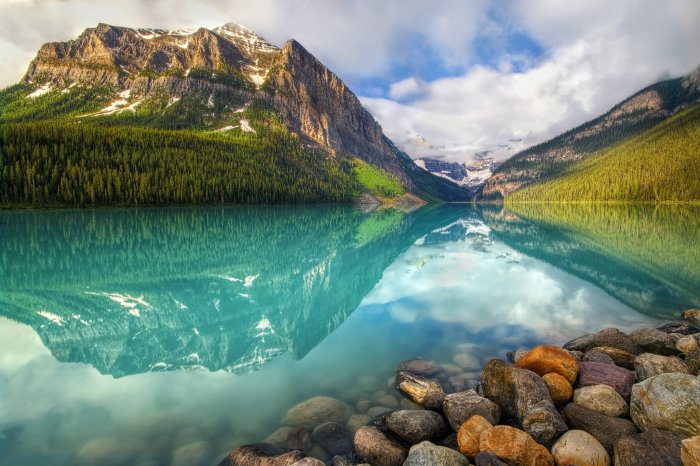
Nature vacation spots offer a plethora of adventure activities that cater to thrill-seekers and nature enthusiasts alike. These activities provide an immersive experience, allowing participants to connect with the natural world while pushing their limits.
Hiking
Hiking is a classic outdoor activity that offers a range of experiences, from leisurely strolls through scenic trails to challenging ascents to mountain peaks. The skill level required varies depending on the trail’s difficulty, but most hikes are accessible to beginners with proper preparation.
- Skill Level: Beginner to Advanced
- Physical Demands: Varies depending on the trail
- Environmental Factors: Weather, altitude, terrain
- Safety Precautions: Proper footwear, hydration, awareness of surroundings
Kayaking
Kayaking offers a unique perspective of nature from the water. Whether paddling through calm lakes or navigating whitewater rapids, kayakers experience the thrill of being immersed in the natural environment. The skill level required depends on the type of kayaking, but beginners can start with calm waters.
Nature vacation spots offer a serene escape from the hustle and bustle of everyday life, but if you’re looking for something a little more adventurous, consider exploring adventure vacation packages for singles. These packages often include activities like hiking, kayaking, and rock climbing, which are perfect for those who want to get their adrenaline pumping.
And after a day of adventure, you can relax in the tranquility of your natural surroundings.
- Skill Level: Beginner to Advanced
- Physical Demands: Moderate to Strenuous
- Environmental Factors: Water conditions, weather
- Safety Precautions: Life jacket, proper paddling technique
Wildlife Safaris
Wildlife safaris provide an unforgettable opportunity to observe animals in their natural habitat. From spotting majestic lions in the African savanna to tracking elusive tigers in the Indian jungle, safaris offer a thrilling and educational experience. The skill level required is typically low, but participants should be prepared for physical challenges.
- Skill Level: Beginner to Intermediate
- Physical Demands: Varies depending on the terrain
- Environmental Factors: Weather, terrain, animal behavior
- Safety Precautions: Respecting animal boundaries, following guide instructions
| Activity | Difficulty Level | Recommended Destinations |
|---|---|---|
| Hiking | Beginner to Advanced | Grand Canyon, Yosemite National Park, Swiss Alps |
| Kayaking | Beginner to Advanced | Boundary Waters Canoe Area, Florida Everglades, Halong Bay |
| Wildlife Safaris | Beginner to Intermediate | Serengeti National Park, Kruger National Park, Amazon Rainforest |
Responsible Nature Tourism
It’s essential to practice responsible nature tourism when engaging in adventure activities. Respecting wildlife, minimizing environmental impact, and supporting local communities are crucial. By following these principles, we can ensure the preservation of these natural wonders for future generations.
Wildlife Encounters: Nature Vacation Spots
Immerse yourself in the vibrant tapestry of life that nature vacation spots have to offer. From the majestic roar of lions to the playful antics of dolphins, wildlife encounters add an unforgettable dimension to your adventure.
Responsible Wildlife Viewing
Respecting the boundaries of these creatures is paramount. Observe wildlife from a safe distance, avoid feeding or touching them, and never disturb their natural habitats. By following these guidelines, we ensure their well-being and preserve the pristine ecosystems they call home.
Ethical Interactions
Ethical wildlife viewing goes beyond passive observation. Engage with wildlife on their terms, avoiding any behavior that may disrupt their routines or cause distress. Remember, they are not performers; they are living beings deserving of our utmost respect.
Diversity of Wildlife
Nature vacation spots are a haven for an astounding array of wildlife. Spot the elusive snow leopard prowling the Himalayan peaks, marvel at the graceful dance of humpback whales breaching the ocean’s surface, or witness the playful antics of meerkats in the African savanna. The possibilities are endless, promising encounters that will leave an enduring mark on your memory.
Nature Photography
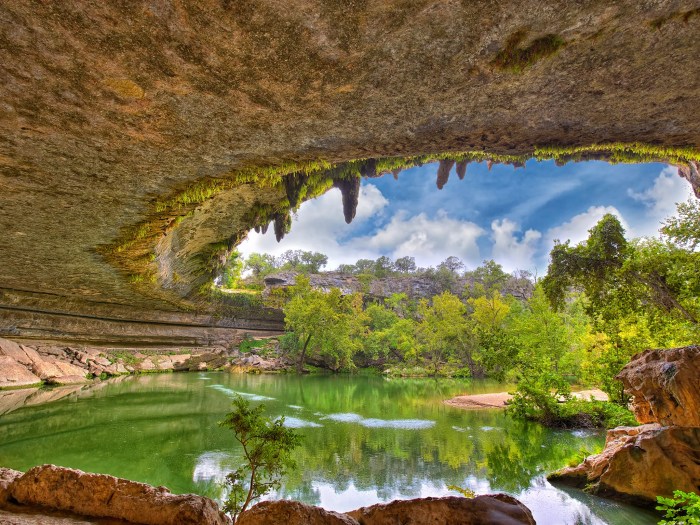
Capture the breathtaking beauty of the natural world through the lens of your camera. Nature photography is an art form that requires patience, observation, and technical expertise. By mastering the fundamentals of photography and understanding the unique challenges of capturing wildlife, you can create stunning images that showcase the wonders of the natural world.
Lenses and Lighting
The choice of lens is crucial for nature photography. Wide-angle lenses allow you to capture vast landscapes, while telephoto lenses bring distant subjects closer. Understanding the effects of different lighting conditions is also essential. Golden hour, just after sunrise or before sunset, provides warm, diffused light that enhances the colors and textures of nature.
Composition and Wildlife Moments
Composition plays a vital role in creating visually appealing nature photographs. The rule of thirds, leading lines, and negative space can guide your eye and create a sense of balance. Patience and observation are key to capturing unique wildlife moments. Observe animal behavior and anticipate their movements to capture intimate and candid shots.
Planning and Execution
Planning is essential for a successful nature photography expedition. Research your destination, identify potential shooting locations, and check weather forecasts. Pack the right gear, including a tripod, extra batteries, and protective gear for your camera. Be prepared to spend time in the field, waiting for the perfect shot.
Recommended Resources
- National Geographic Field Guide to Photography
- The Photographer’s Eye: Composition and Design for Better Pictures
- Wildlife Photography: A Complete Guide
Nature-Inspired Art and Literature
Nature’s beauty and grandeur have served as a muse for artists and writers throughout history. From the majestic landscapes captured in paintings to the evocative imagery in literature, nature has profoundly influenced the human imagination.
Yo, check it out! If you’re into getting your nature on, there’s nothing better than exploring the great outdoors. From hiking through lush rainforests to kayaking down crystal-clear rivers, there are endless ways to connect with Mother Earth. But if you’re looking for something a little more adventurous, why not consider an adventures abroad travel ?
With so many amazing destinations to choose from, you’re sure to find the perfect spot to escape the hustle and bustle and reconnect with the beauty of nature.
The natural world has inspired countless works of art, from the serene landscapes of Claude Monet to the vibrant wildlife paintings of John James Audubon. Sculptors like Henry Moore and Barbara Hepworth have found inspiration in organic forms, creating abstract works that evoke the fluidity and power of nature.
Painting
Painters have long been drawn to the beauty of the natural world. The Hudson River School in the United States, for example, celebrated the vast and untamed wilderness of the American frontier. Artists like Thomas Cole and Frederic Edwin Church depicted scenes of towering mountains, pristine forests, and sparkling rivers, capturing the grandeur and awe-inspiring nature of the American landscape.
Literature
Nature has also played a significant role in literature. From the pastoral landscapes of William Wordsworth to the wilderness adventures of Jack London, writers have used nature as a setting, a source of inspiration, and a symbol of human experience. In his novel “Moby-Dick,” Herman Melville explores the vastness and mystery of the ocean, using it as a metaphor for the human soul.
Music
Nature’s rhythms and melodies have also inspired musicians. Classical composers like Beethoven and Vivaldi incorporated sounds of nature into their works, creating pieces that evoke the tranquility of a forest or the drama of a thunderstorm. Contemporary musicians continue to find inspiration in nature, from the ethereal soundscapes of Brian Eno to the folk-inspired songs of Joni Mitchell.
Conclusion
Nature’s influence on art and literature is undeniable. From the earliest cave paintings to modern masterpieces, nature has provided artists and writers with a limitless source of inspiration. Through their works, they have captured the beauty, power, and mystery of the natural world, inviting us to appreciate and connect with its wonders.
Health Benefits of Nature Vacations
Spending time in nature has numerous physical, mental, and emotional benefits. Scientific studies and countless anecdotes attest to the therapeutic effects of nature.
Nature exposure has been linked to reduced stress, improved mood, and enhanced cognitive function. Studies have shown that spending time in green spaces can lower cortisol levels, the hormone associated with stress. Nature also stimulates the production of serotonin, a neurotransmitter that promotes feelings of well-being and happiness.
Physical Benefits
* Reduced risk of chronic diseases such as heart disease, obesity, and diabetes.
* Improved cardiovascular health by lowering blood pressure and improving cholesterol levels.
* Increased physical activity due to outdoor exploration and recreation.
Mental Benefits
* Reduced anxiety and depression by calming the nervous system and improving mood.
* Enhanced cognitive function by improving attention, memory, and creativity.
* Improved sleep quality by reducing stress and promoting relaxation.
Emotional Benefits
* Increased sense of awe and wonder, leading to a deeper appreciation for the natural world.
* Enhanced social connections through shared experiences in nature.
* Fostered mindfulness and a greater sense of connection to the present moment.
– Describe unique and innovative nature-themed accommodations, such as treehouses, glamping tents, and eco-lodges.
Nature-themed accommodations have become increasingly popular for travelers seeking unique and immersive experiences in natural settings. These accommodations blend seamlessly with their surroundings, offering guests a chance to reconnect with nature and enjoy its beauty from a different perspective.
Treehouses, glamping tents, and eco-lodges are among the most popular types of nature-themed accommodations. Treehouses provide a unique perspective of the forest canopy, while glamping tents offer a luxurious camping experience with amenities like comfortable beds and private bathrooms. Eco-lodges prioritize sustainability and often incorporate eco-friendly practices into their design and operations.
Treehouses, Nature vacation spots
Treehouses are elevated structures built among the branches of trees. They offer a unique perspective of the forest canopy and a chance to experience nature from a different angle. Treehouses can range from simple platforms to elaborate structures with multiple rooms and amenities.
Some notable treehouse accommodations include:
- Treehouse Point in Issaquah, Washington: This unique treehouse resort offers a variety of treehouses to choose from, each with its own unique design and amenities.
- The Green O in Fayetteville, Texas: This eco-friendly treehouse resort features treehouses made from sustainable materials and powered by solar energy.
- Free Spirit Spheres on Vancouver Island, Canada: These spherical treehouses offer a unique and unforgettable experience suspended among the trees.
Glamping Tents
Glamping tents offer a luxurious camping experience with amenities like comfortable beds, private bathrooms, and even air conditioning. Glamping tents are typically set up in scenic locations, such as national parks or private reserves.
Some notable glamping tent accommodations include:
- Under Canvas in various locations across the US: This glamping company offers a variety of tent options, from cozy safari tents to spacious yurts.
- Collective Retreats in Vail, Colorado: This glamping resort features luxurious tents with private decks and stunning mountain views.
- The Resort at Paws Up in Greenough, Montana: This exclusive glamping resort offers a variety of tent options, including luxury tents with private butlers.
Eco-Lodges
Eco-lodges prioritize sustainability and incorporate eco-friendly practices into their design and operations. Eco-lodges often use renewable energy sources, conserve water, and recycle waste. They also support local communities and protect the environment.
Some notable eco-lodge accommodations include:
- Lapa Rios Ecolodge in Costa Rica: This eco-lodge is located in a private rainforest reserve and offers a variety of sustainable accommodations, including treehouses and bungalows.
- Inkaterra Reserva Amazonica in Peru: This eco-lodge is located in the Peruvian Amazon rainforest and offers a variety of sustainable accommodations, including cabins and treehouses.
- Bambu Indah in Bali, Indonesia: This eco-lodge is located in a lush bamboo forest and offers a variety of sustainable accommodations, including bamboo houses and villas.
Comparison of Nature-Themed Accommodations
The following table compares the key features, amenities, and sustainability practices of different types of nature-themed accommodations:
| Accommodation Type | Key Features | Amenities | Sustainability Practices |
|---|---|---|---|
| Treehouses | Elevated structures built among the branches of trees | Varies depending on the treehouse, but may include comfortable beds, private bathrooms, and decks | May incorporate sustainable materials and practices, such as using reclaimed wood and solar energy |
| Glamping Tents | Luxurious tents set up in scenic locations | Typically include comfortable beds, private bathrooms, and air conditioning | May incorporate sustainable practices, such as using solar energy and recycling waste |
| Eco-Lodges | Accommodations that prioritize sustainability | May include a variety of amenities, such as comfortable beds, private bathrooms, and restaurants | Incorporate eco-friendly practices into their design and operations, such as using renewable energy sources, conserving water, and recycling waste |
Benefits and Challenges of Staying in Nature-Themed Accommodations
Staying in nature-themed accommodations offers a number of benefits, including:
- Unique and immersive experience: Nature-themed accommodations offer a unique and immersive experience in natural settings, allowing guests to reconnect with nature and enjoy its beauty from a different perspective.
- Sustainability: Many nature-themed accommodations prioritize sustainability and incorporate eco-friendly practices into their design and operations, reducing their environmental impact.
- Health benefits: Spending time in nature has been shown to have a number of health benefits, including reducing stress, improving mood, and boosting creativity.
However, there are also some challenges to consider when staying in nature-themed accommodations, including:
- Cost: Nature-themed accommodations can be more expensive than traditional hotels or motels.
- Limited availability: Nature-themed accommodations are often in high demand, so it’s important to book in advance.
- Weather: Nature-themed accommodations are often located in remote areas, which can make them vulnerable to weather conditions.
Tips for Choosing the Right Nature-Themed Accommodation
When choosing a nature-themed accommodation, it’s important to consider the following factors:
- Type of accommodation: Consider the different types of nature-themed accommodations available, such as treehouses, glamping tents, and eco-lodges, and choose the one that best suits your needs.
- Location: Consider the location of the accommodation and whether it is in a scenic area that you would like to explore.
- Amenities: Consider the amenities that are important to you, such as comfortable beds, private bathrooms, and air conditioning.
- Sustainability: If you are interested in staying in a sustainable accommodation, look for accommodations that prioritize sustainability and incorporate eco-friendly practices into their design and operations.
Short Story
I recently had the opportunity to stay in a treehouse at Treehouse Point in Issaquah, Washington. The treehouse was located in a beautiful forest setting and offered stunning views of the surrounding trees. The treehouse was well-equipped with a comfortable bed, a private bathroom, and a deck. I spent my days exploring the forest and enjoying the peace and quiet of the surroundings. I also enjoyed sitting on the deck and watching the birds and squirrels play in the trees. My stay at Treehouse Point was a truly unique and memorable experience.
Future of Nature-Themed Accommodations
The future of nature-themed accommodations is bright. As more and more people seek unique and immersive experiences in natural settings, the demand for nature-themed accommodations is expected to grow. In addition, the growing awareness of the importance of sustainability is likely to lead to more nature-themed accommodations adopting eco-friendly practices.
Some of the emerging trends in sustainable travel include:
- Increased use of renewable energy sources: Nature-themed accommodations are increasingly using renewable energy sources, such as solar and wind power, to reduce their environmental impact.
- Improved water conservation practices: Nature-themed accommodations are implementing water conservation practices, such as rainwater harvesting and low-flow fixtures, to reduce their water consumption.
- Reduced waste production: Nature-themed accommodations are reducing their waste production by composting food scraps and recycling waste.
By adopting these and other sustainable practices, nature-themed accommodations can help to protect the environment and ensure that future generations can enjoy the beauty of nature.
Cultural Immersion in Nature
Immerse yourself in the rich cultural traditions and practices of indigenous communities residing in or near nature vacation spots. Respecting local customs and contributing to sustainable tourism are essential aspects of an enriching cultural immersion experience.
Indigenous Communities and Nature
* Engage with local guides and community members to learn about their ancestral knowledge, beliefs, and practices related to the natural environment.
* Participate in cultural activities, such as traditional ceremonies, storytelling, and crafts, to gain insights into the deep connection between indigenous communities and nature.
* Support local businesses and initiatives that promote sustainable tourism and preserve cultural heritage.
Sustainable Tourism Practices
* Choose tour operators and accommodations that prioritize responsible tourism practices, minimizing environmental impact and respecting local communities.
* Learn about and adhere to local customs and regulations regarding access to sacred sites, wildlife viewing, and other sensitive areas.
* Reduce your environmental footprint by packing light, conserving water and energy, and disposing of waste responsibly.
Cultural Enrichment and Nature Appreciation
* Cultural immersion in nature enhances your appreciation for the natural world by providing a deeper understanding of its cultural significance and the interconnectedness of all living things.
* Exposure to different perspectives and ways of life fosters empathy, broadens horizons, and creates lasting memories.
* By embracing cultural immersion in nature, you contribute to the preservation and celebration of diverse cultural traditions while promoting sustainable tourism practices.
Technology and Nature
In the modern era, technology has become an indispensable companion for nature enthusiasts. From apps that provide detailed trail maps to gadgets that enhance wildlife viewing, technology has the power to elevate nature vacation experiences to new heights.
One of the most significant benefits of technology in nature is its ability to provide real-time information. Apps like AllTrails and Gaia GPS offer comprehensive maps, elevation profiles, and offline navigation, allowing hikers and backpackers to explore remote areas with confidence. These apps also feature user-generated reviews and photos, providing valuable insights into trail conditions and scenic viewpoints.
Gadgets and Devices
- Binoculars with rangefinders: Enhance wildlife viewing by measuring the distance to animals, allowing for more accurate identification and photography.
- Night vision goggles: Extend the day’s adventures into the night, enabling wildlife observation in low-light conditions.
- Trail cameras: Capture candid shots of wildlife without disturbing their natural behavior, providing valuable insights into animal activity patterns.
- Portable solar chargers: Ensure that devices remain powered in remote areas, allowing for continuous use of apps and gadgets.
Technology also plays a crucial role in safety during nature vacations. Emergency locator beacons (ELBs) and personal locator beacons (PLBs) provide peace of mind by allowing hikers and adventurers to summon help in case of an emergency. These devices use satellite technology to transmit a distress signal, enabling rescuers to locate the individual quickly.
Online Resources
- National Park Service website: Provides detailed information on all national parks, including maps, trail guides, and ranger-led programs.
- Audubon Society website: Offers comprehensive birdwatching resources, including species identification guides, bird checklists, and birding hot spots.
- iNaturalist website: A collaborative platform where users can share observations of plants, animals, and other organisms, contributing to scientific research and conservation efforts.
By embracing technology while immersing themselves in nature, vacationers can enhance their experiences, stay informed, and ensure their safety. From providing real-time information to connecting with fellow nature enthusiasts, technology has become an essential tool for the modern-day nature lover.
Sustainable Development in Nature Tourism
Sustainable development in nature tourism prioritizes the preservation and conservation of natural ecosystems while supporting responsible tourism practices. It balances the economic benefits of tourism with the protection of the environment and cultural heritage of destinations.
If you’re seeking a tranquil escape amidst nature’s embrace, look no further than nature vacation spots. Whether it’s a cozy cabin nestled in the woods or a luxurious resort perched on a secluded beach, these havens offer a respite from the hustle and bustle of everyday life.
For the more adventurous, outdoor traveler vacations provide an exhilarating blend of nature immersion and physical challenges. From hiking through towering mountains to kayaking through serene lakes, these adventures cater to those who crave a deeper connection with the great outdoors.
And as you return to your nature vacation spot, the tranquility of the surroundings will envelop you, leaving you rejuvenated and refreshed.
Sustainable tourism initiatives focus on minimizing negative impacts on the environment, such as reducing carbon emissions, promoting energy efficiency, and conserving water resources. They also promote the preservation of wildlife and habitats, supporting conservation efforts and promoting responsible wildlife viewing practices.
Best Practices for Sustainable Nature Tourism
- Plan and manage tourism responsibly: Implement comprehensive plans that assess the carrying capacity of destinations and mitigate potential environmental impacts.
- Protect biodiversity: Establish and enforce regulations to protect endangered species and their habitats, ensuring that tourism activities do not disrupt or harm wildlife.
- Reduce carbon footprint: Promote the use of renewable energy sources, encourage public transportation and cycling, and implement carbon offset programs.
- Conserve water resources: Implement water conservation measures in accommodations and encourage visitors to reduce water consumption.
- Educate visitors: Provide educational materials and programs that promote responsible tourism practices and foster an understanding of the importance of conservation.
Conclusion
As you embark on your nature vacation, remember to tread lightly and respect the delicate balance of the ecosystems you visit. Embrace the opportunity to learn from local communities and support sustainable practices that preserve these precious destinations for generations to come.
May your travels be filled with awe-inspiring moments, unforgettable experiences, and a renewed appreciation for the boundless beauty of the natural world.
FAQ Guide
What are the most popular nature vacation destinations?
Popular nature vacation destinations include national parks, wildlife sanctuaries, coastal regions, and mountain ranges. Some of the most visited destinations include Yellowstone National Park, the Great Barrier Reef, the Amazon rainforest, and the Serengeti National Park.
What activities can I enjoy on a nature vacation?
Nature vacation activities vary depending on the destination but may include hiking, kayaking, wildlife safaris, birdwatching, camping, and fishing. Some destinations also offer unique experiences such as hot air ballooning, zip-lining, and snorkeling.
How can I travel sustainably on a nature vacation?
To travel sustainably on a nature vacation, choose eco-friendly accommodations, reduce waste by packing reusable items, conserve energy and water, support local businesses, and respect wildlife and natural environments.
